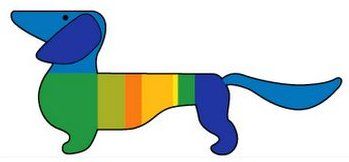To celebrate the opening day of the 2012 Olympics, let's look at some Olympic animals ...
Australia's Henry Pearce stopped rowing in his 1928 Amsterdam games
quarter-final to allow a family of ducks to pass safely in front of his
boat. He still won the heat and took gold in the final.
The 2012 Aquatic Centre, built for £269m, has been designed in the shape
of a stingray - the fish branded "rank and disagreeable" in Francis
Day's 1884 opus The Fishes of Great Britain and Ireland.
Remember the music that greeted water polo teams as they entered the arena in
2008? Beijing’s brilliant choice: the theme from the movie “Jaws”.
The first Olympic Games in which doves were released to symbolize peace was 1920. The traditional release of live doves at the Olympic opening ceremony was abandoned after Seoul 1988, when around 10 chose not to swoop majestically across the skies but instead to settle on the rim of the Olympic cauldron just as it was being lit and were instantly burned to death.
The London Olympic site will feature more than 500 bird boxes and 150 bat boxes to help maintain the local wildlife. But they will not be opened until after the Games, lest the winged beasts disrupt athletes' preparations.
The 1900 Paris Games included a long jump for horses and a high jump for horses. Extra Dry won the former with a leap of 6.10m, beating Oreste, who finished joint-first in the latter.
The London Olympic Park spans 500 acres - more than 100 toads and 2,000 newts were saved from the Olympic Park site during construction.
Tough Australian quarantine rules meant that all the equestrian events at the 1956 Melbourne Games were held 9,700 miles away in Stockholm.
Waldi The Dachshund, created for the 1972 Munich Games, was the first Olympic mascot. Waldi proved so popular the 1972 Marathon route was arranged in the shape of his body.
Olympic mascots were only introduced in 1968 when Mexico used both a red jaguar and a white dove to help them communicate their Olympic message.
See a listing of all Olympic Mascots at Wikipedia.
Ladbrokes are offering competitive odds of 2012-1 for the Loch Ness Monster to be spotted in the Thames during the London Olympics.
Upset when his mount Ranchero refused at three jumps in the 1968 Mexico Games' modern pentathlon, knocking him out of medal contention, West Germany's Hans-Jurgen Todt leapt out of the saddle and began slapping the fussy horse. Team-mates had to restrain him.
Athens 2004 saw the Olympics Games’ first cases of horse doping. Germany was disqualified from gold in the team jumping event for a substance thought to have been used in a cream to treat a horse’s sore skin. Irish rider Cian O’Connor became a hero overnight when he won gold at the same Games. But his horse, Waterford Crystal, tested positive for two antipsychotic drugs normally given to humans.
Sources:
London 2012 Olympics: 100 quirky facts from Olympic history
Olympic Games Trivia
Olympic Games - Interesting Facts
Mad Olympic Games: Quirky stories and facts





No comments:
Post a Comment